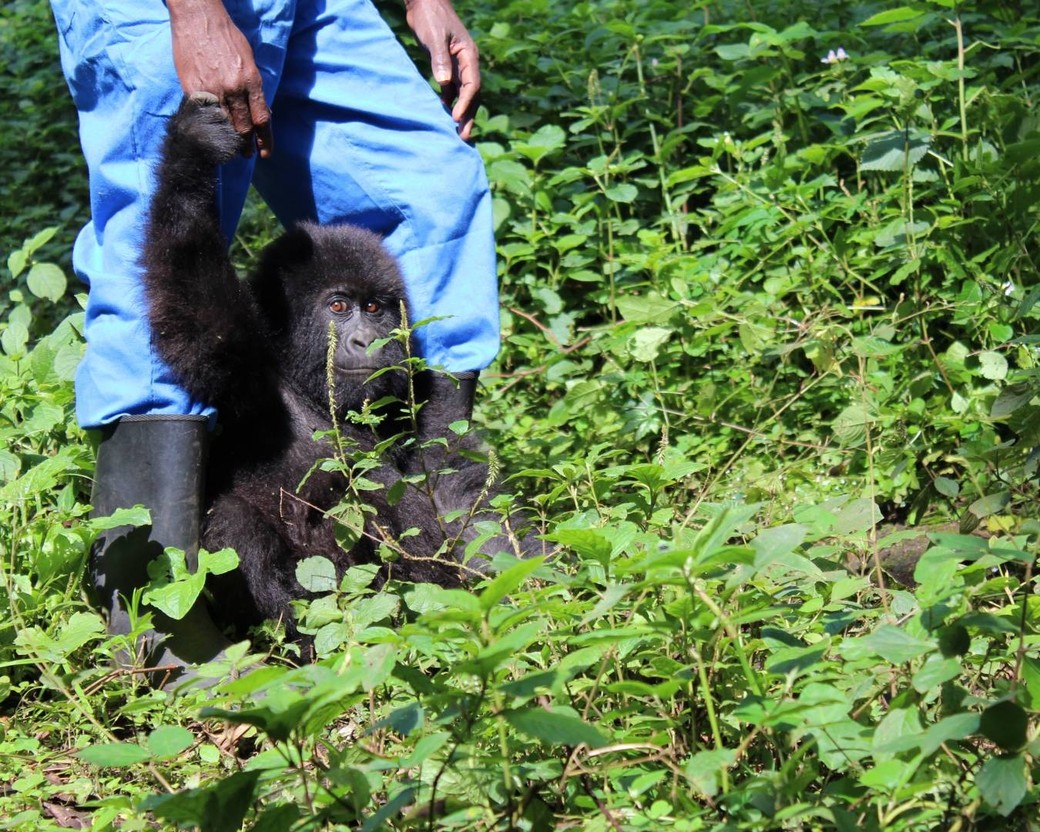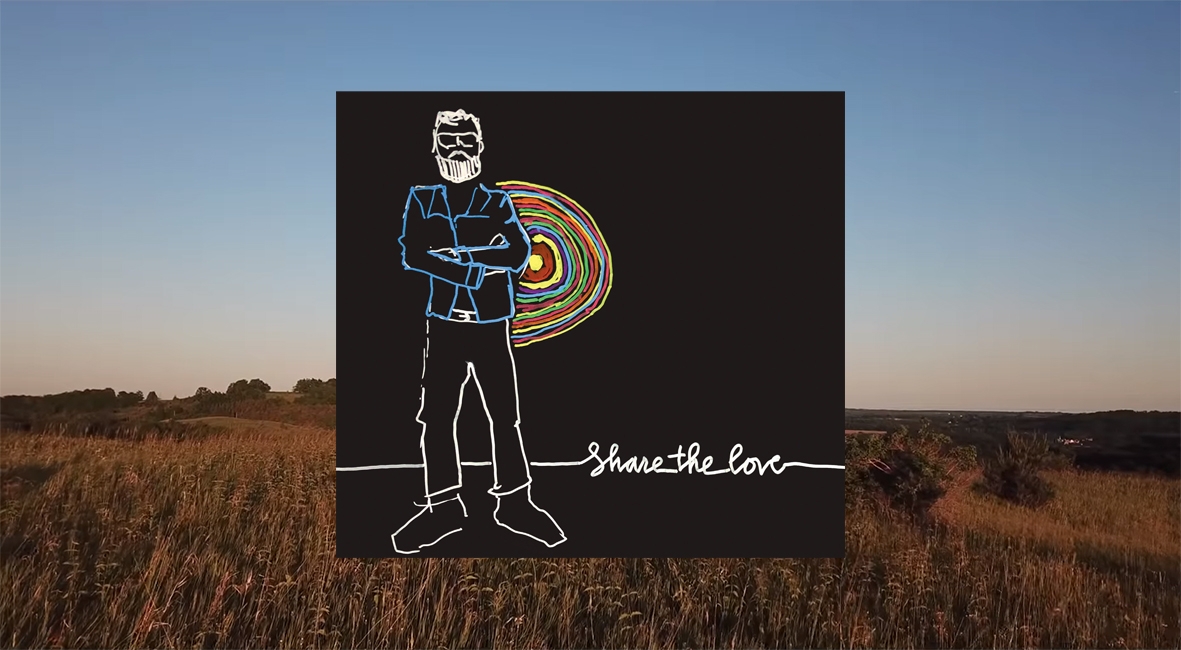
Gorilla Doctors: The Impact
In conjunction with the Canadian Museum of Nature’s screening of Gorilla Doctors, OLM will be publishing a three-part series written by the documentary cinematographer Michael Boland. The screening takes place Thursday, October 9.
Part Two: The Impact of The Gorilla Doctors
Gorilla Doctors have a motto, ‘Saving a species, one gorilla at a time.’
Gorilla Orphans
The Senkwekwe Orphan Centre, located at the Virunga National Park headquarters in Rumangabo, was built in 2007 in honor of the murdered silverback. When we arrived, the orphanage had just received a three-year-old male found in a field by local farmers outside of the park. Cranfield’s assumption was the young gorilla was a victim of poachers who could not find a buyer and just abandoned it. He was given the name Matabishi, which means ‘Bonus’. When he was brought to the sanctuary, he was kept separate from the three resident mountain gorilla female orphans while he served out his quarantine period and received much needed medical attention. The mountain gorilla females, 11-year-old Maisha and 7-year-old females Ndakasi and Ndezi, were rescued as babies from the Senkwekwe family after the ’07 massacre.
“No mountain gorillas had ever been raised in captivity,” said Mike. “We developed protocols of feeding both market food after careful washing and food brought down in from the forest. Secondly, a couple of park rangers and specifically Andre Bauma were brought in on a 24/7 caregiver basis. This has been a total success story.”

Senkwekwe Centre, Rumangabo, DRCongo.
“However, despite the health monitoring of the orphan’s caregivers, there was an outbreak of human herpes virus, diagnosed through extensive DNA sequencing at UC Davis. In captivity it has been reported that human herpes simplex can cause mortality in great apes. After some debate it was apparent that the release of these animals back into the wild would risk the health of the entire population of 480 mountain gorillas in the Virunga Massif. For now, Maisha, Ndakasi and Ndeze will continue to live in their large forested enclosure at the Senkwekwe Center.
Dr. Mike and Eddy prepared a table and Matabishi was sedated. For the next 30 minutes the vets performed an extensive examination on the young male, taking blood and saliva samples. The vials were then tested at the Gorilla Doctor’s lab in Musanze. A clean bill of health came back a few weeks later. Matabishi could now be introduced to the three females. Eleven-year-old Maisha never had a baby to call her own and Matabishi needed a mother for protection from the other two females, but the introduction had to be done carefully for everyone’s safety. Caregiver Andre Bauma isolated the young male inside the compound building and then brought in Maisha. Within seconds she wrapped Matabishi into her bosom and began to utter a low murmuring sigh. Presto! The adoption was complete. Matabishi buried his head into her hair and clung to her neck with both arms. He now had the mother he so needed.
I’d been in Africa nearly four months and it was time to fly home… then came the call. It was from the Fossey Fund’s Karasoke Research Centre to Gorilla Doctors. It was an emergency. An 18-month-old male gorilla had been caught in a rope snare in the Bisoke Volcano region and it had to be removed immediately.
Freeing an Infant from a Poacher’s Snare
“A snare is always a medical emergency. As the youngster tries to bite and pull on the snare to free himself, the rope begins to tighten, causing damage to the limb,” said Cranfield. “After three or four days the hand or foot becomes dead. After a month or so the limb will fall off and the exposed part could become infected. Remember what happened to the silverback, Getty and the consequences of infection. I’m sending Dr. Jean Felix and Dr. Noheli at dawn tomorrow. I suggest you change your flight and go with them.”

The number one threat to the gorillas is trauma from snares. On average, 1500 snares of varying types are confiscated each year in both Rwanda and the DR Congo. The poachers are usually after antelope and other small game but invariably gorillas are captured in the traps. When a young infant is trapped the Gorilla Doctors must anesthetize the mother in order to free and treat the infant. The anesthetic is a ketamine/metadomidine mixture and they’re fully anesthetized for 40 minutes, which is plenty of time for the vets to provide medical treatment and collect samples for further testing.
Virunga Park Rangers show the forest snares they have seized, Rumangabo, DRCongo. Photo: Michael Boland
This snare intervention would be extra challenging because this family contained three large silverbacks who could potentially become agitated over the intervention. The Karasoke Research Centre therefore provided 12 trackers for the sole purpose of forming a ring around the Gorillas Doctors for protection from charging silverbacks.
Again, it was a hefty trek up to 9,500 feet at the base of the Bisoke Volcano. On the way up, we spotted the dominant and second ranking silverbacks ranging down in the gorge, far from the ensnared infant, which was a relief to the entire field team. We saw the mother with her infant as she crossed the upper part of the gorge and made into the forest. We were on her trail. She finally stopped at an open spot and Dr. Jean Felix aimed his dart gun and hit her exactly in the left upper shoulder. She did not make a sound. She simply pulled the dart out and strolled off. Within five minutes she was anesthetized. The Rwanda Head Vet grabbed the infant and quickly administered a mild sedative. The baby screamed then all hell broke loose.
The third silverback was within hearing distance and charged our group but was blocked by the trackers. He began to speed around the other side and the trackers had to move fast to establish the quadrant of protection, beating the bushes and making noises as they went. The footing was horrendous. The vegetation was trampled vines. One small slip and I would be flat on my ass. There was not any room for my tripod. The sequence would have to be all hand-held. While the trackers held the roaming silverback at bay, Dr. Jean Felix quickly removed the rope snare from the baby’s left wrist. The two vets spent the next ten minutes taking blood and saliva samples before administrating the reversal drug that would re-awaken both mother and baby. I could see that Dr. Jean Felix was operating on adrenaline because the silverback was constantly trying to break through the tracker-barricade. Then we all backed off 30-40 feet away and waited for the reversal drug to take effect. Mother soon began to arouse and instantly cuddled her infant. She was slow to her feet but would soon be re-united with the family. Gorilla Doctors had done their job. We trekked back down the mountain.
“You can’t work with and be close to this species without being in awe of them. You become involved with the lives of the different families and individuals on a level that normally doesn’t happen with wild populations,” said Dr. Cranfield. “So do I have the best job in the world? You bet. I get to look after the most beautiful creatures in the world!”
By: Michael Boland C.S.C.: Director and Cinematographer
Multi-Gemini Award-winner and Emmy nominated Michael Boland was co-producer, co-director and DOP on A Team for Peace. Michael is one of Canada’s foremost documentary cinematographers. In a career spanning 36 years, he’s either filmed or directed and filmed such landmark documentary series such as Millennium; Tribal Wisdom and the Modern World, The Struggle for Democracy, Ken Dryden’s Home Game, The Fifties, Flightpath, and countless more. Michael cut his journalistic and story-telling teeth on Canada’s flagship current affairs series the fifth Estate in the early 80’s. Since then he’s gone on to do work for National Geographic, the BBC, Discovery USA, and every other major American Network that’s taken him extensively to every continent on the globe. It’s with a keen eye for picture and human compassion that Michael will apply his skills to any project. He has just published an eBook on his experiences in the documentary genre entitled ‘Through the Lens of My Eye; Adventures of a Documentry Cameraman’.
More information can be found on the Gorilla Doctors blog.










